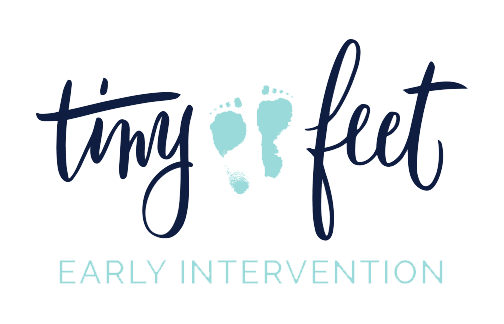Last week I shared toys for manipulative play. This week I am going to continue sharing some of my favorite things with you! This time we are looking at toys for physical play! Get ready to move!!!
Great Toys for Physical Play:
- Balls While a ball is a favorite toy for me (and all the kiddos I work with) I do not have a favorite ball. It depends on the child I'm working with, their developmental skills, and their personality. There are balls with rivets that can help with sensory issues, balls that light up, ball that are huge, balls that are small. You pick! The one I'm sharing with you here is great for sensory due to the rivets, light weight, but it can also be stretched! Lots of fun things, but it's also $10. A child can have just a much fun with a ball from the dollar store.
- Catch Me Crabbie How adorable is this crab?!? My aunt actually bought this toy for my daughter. I loved it so much, I've bought 2 more for Tiny Feet. Haha! When you press the button on his head, he plays a jingle & goes crawling across your floor. This is such a great gross motor activity! I use it with babies and toddlers, whether we're reaching for the toy, crawling, walking, or running after him! The activation button is great for cause and effect as well!
- Pop Up Tunnel Kids love crawling in, crawling through and playing games such as peek-a-boo. Really the possibilities are as endless as your imagination. We pretend to be fish swimming in the river or a truck going through a tunnel. I use this with my crawlers, but the older kiddos love it as well! If you turn it vertically and hold it in place, your child can practice seeing how high her or she can jump!
- Melissa & Doug Chomp & Clack Alligator Push Toy These little alligators open and close their mouths as your child is pushing it forward! Very durable (it's Melissa and Doug!) Perfect for that child who is cruising along furniture but not ready for walking independently! Really, any push toy is great, but this one is my favorite!
- Push Mower I would say all boys love this toy, but really, all the girls love it too! It's a great outdoor toy for the back yard. It has a place for bubbles. The faster you go, the more bubbles come out! Perfect for the ones who are walking or just beginning to walk! It promotes more independence and working towards that faster walk/run.
- Melissa & Doug Dust! Sweep! Mop! This set is lots of fun for your little one to "help" you clean your house. Model cleaning activities and they can follow right along with you! It's a great set for siblings because between the broom, mop, brush, and dust pan, there is something for everyone! Once again, it's Melissa & Doug, so you know you're getting a high quality, durable toy!
- Slide with Stairs One of the skills I'm constantly asking parents about is, "How does your child do with stairs? Does he alternate his feet? Does he hold on to the rail?" A toy like this is a great way to make these gross motor skills play rather then routine. Through play, it becomes fun and children practice over and over again! And of course, you go up the stairs to get the reward of sliding down! Excellent reinforcer! The one I'm recommending also has a swing!
- Balance Bike This one might seem a little scary at first, but really, a great way to teach your child to ride a bike. With a balance bike, you'll never have to worry about training wheels! You can look around at different designs; some are for children as young as a year and a half. The balance bike pictured is the one my son has. It has been great for us! If you make the purchase, know that is takes most kids a month to get the hang of it (and they just keep getting better)!
Each of the toys listed have a link to Amazon so you can see more details of what I'm recommending. However, as you guys know, I'm a thrifty lady, and I always shop around before purchasing!
We all know that for physical play, you don't necessarily need a toy. So here are...
Some of My Favorite Activities for Physical Play-
- A riveting game of tag! We run circles in our house trying to catch one another!
- Duck, Duck, Goose! While they may not completely understand, tapping each other on the head and running in a circle is always loads of fun!
- Jumping in rain puddles! I know the Mom in all of us wants to hold back on this... BUT... Life is short, go put on your rain boots, and get a little messy with your kiddo! You won't regret it! The look on your kid's face will be enough.
















